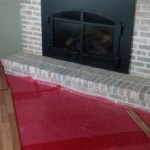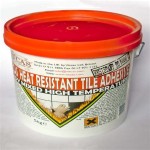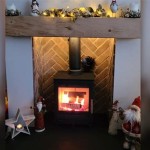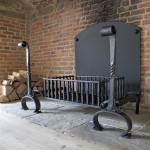Antique Fireplace Mantels in Portland, Oregon: A Guide to Acquisition and Restoration
Portland, Oregon, with its rich architectural history and appreciation for vintage aesthetics, is a prime location for those seeking antique fireplace mantels. These architectural elements offer a tangible connection to the past, adding character and value to homes. Sourcing and restoring these pieces, however, require careful consideration and knowledge. This article provides an overview of acquiring and restoring antique fireplace mantels in the Portland area, focusing on key aspects such as identifying authentic pieces, understanding common materials, and navigating the restoration process.
Identifying Authentic Antique Fireplace Mantels
Distinguishing an authentic antique fireplace mantel from a reproduction requires a keen eye and a basic understanding of historical styles and manufacturing techniques. Several factors contribute to determining authenticity, including the age, material, design details, and overall condition of the mantel.
One of the initial steps is to assess the material. Common materials used in antique fireplace mantels include wood, marble, slate, and cast iron. The type of wood used can offer clues about its age and origin. For example, old-growth pine or oak are frequently found in mantels from the 18th and 19th centuries. Marble and slate mantels were popular choices, particularly during the Victorian era, and their grain patterns and veining can provide insights into their authenticity. Cast iron mantels, often highly decorative, were also a staple of Victorian and Edwardian interiors.
Examining the joinery methods is another critical aspect of identification. Antique mantels often feature handcrafted joinery techniques such as dovetail joints, mortise-and-tenon joints, and wooden pegs. These methods differ significantly from the mass-produced joinery found in modern reproductions, which typically rely on screws, nails, and adhesives. Imperfections in the joinery, while sometimes seen as flaws, can be indicative of handcraftsmanship and age.
The design and ornamentation of the mantel are also telltale signs of its period. Researching historical architectural styles, such as Federal, Georgian, Victorian, and Arts and Crafts, can help determine the era to which a particular mantel belongs. Common decorative elements include carvings, moldings, inlays, and applied ornaments. The style and complexity of these elements can vary significantly depending on the period and the social status of the original homeowner.
Checking for signs of wear and patina is essential. Authentic antique mantels will inevitably exhibit some level of wear and tear, including scratches, dents, fading, and discoloration. This patina, developed over decades or even centuries, can be a valuable indicator of age. Attempting to replicate this natural wear can be challenging, making it difficult for reproductions to convincingly mimic the appearance of an authentic antique.
Finally, consulting with an experienced appraiser or antique dealer can provide valuable insights and authentication assistance. Professionals in the field possess the knowledge and expertise to accurately assess the age, origin, and value of antique fireplace mantels. Their input can be particularly helpful when dealing with rare or unusual pieces.
Understanding Common Materials and Their Degradation
The longevity and aesthetic appeal of antique fireplace mantels depend heavily on the materials from which they're constructed. Understanding the properties of these materials, as well as the ways in which they degrade over time, is crucial for proper care and restoration.
Wood mantels, frequently constructed from pine, oak, mahogany, or walnut, are susceptible to various forms of degradation. Exposure to moisture can cause warping, swelling, and rot. Insect infestations, such as termites or woodworms, can weaken the structural integrity of the wood. Fluctuations in temperature and humidity can lead to cracking and splitting. Regular cleaning and maintenance, including applying protective coatings, can help mitigate these issues.
Marble and slate mantels, prized for their durability and elegance, are generally more resistant to degradation than wood mantels. However, they are not immune to damage. Marble can be stained by acidic substances and can be scratched by abrasive cleaners. Slate can be prone to chipping and cracking, especially along edges and corners. Proper cleaning with pH-neutral cleaners and applying protective sealants can help preserve the appearance and integrity of these materials.
Cast iron mantels, known for their intricate designs and durability, are susceptible to rust and corrosion. Exposure to moisture and oxygen can cause iron to oxidize, leading to the formation of rust. Over time, rust can weaken the metal and cause it to flake and crumble. Regular cleaning, applying rust inhibitors, and painting with appropriate metal primers and paints can help prevent and mitigate rust damage.
Adhesives and finishes used in the construction and decoration of antique fireplace mantels can also degrade over time. Old glues can become brittle and fail, causing joints to loosen. Original finishes, such as varnish, shellac, and lacquer, can yellow, crack, and peel, obscuring the beauty of the underlying material. Removing old finishes and reapplying new, compatible finishes can restore the original luster of the mantel.
Environmental factors also play a significant role in the degradation of antique fireplace mantels. Exposure to direct sunlight can cause fading and discoloration. Air pollution can deposit grime and soot, dulling the surface of the mantel. Proper ventilation and climate control can help minimize these effects and prolong the lifespan of the mantel.
Navigating the Restoration Process in Portland
Restoring an antique fireplace mantel is a delicate process that requires careful planning, skill, and patience. In Portland, Oregon, a variety of resources are available to assist homeowners with their restoration projects, including experienced contractors, specialized restoration services, and suppliers of antique hardware and finishes.
The initial step in the restoration process is to assess the condition of the mantel and determine the scope of the work required. This assessment should include identifying any structural damage, such as cracks, warping, or rot, as well as any aesthetic imperfections, such as stains, scratches, or peeling finishes. A detailed inspection will help determine the most appropriate restoration techniques and materials.
Cleaning the mantel is an essential part of the restoration process. The specific cleaning methods will depend on the material of the mantel and the type of dirt or grime that needs to be removed. Gentle cleaning solutions and soft brushes should be used to avoid damaging the surface. For stubborn stains or residues, professional cleaning services may be required.
Repairing structural damage is a critical step in ensuring the longevity of the mantel. Cracks can be filled with epoxy or wood fillers, depending on the material of the mantel. Warped or rotted wood may need to be replaced with new wood that matches the original in species and grain. Missing or broken pieces can be replicated by skilled woodworkers or sculptors.
Removing old finishes is often necessary to restore the original beauty of the mantel. Chemical strippers, heat guns, and sanding can be used to remove old paint, varnish, or lacquer. Care should be taken to avoid damaging the underlying material. After the old finish has been removed, the surface should be properly prepared for a new finish.
Applying a new finish is the final step in the restoration process. The type of finish used will depend on the material of the mantel and the desired aesthetic. Traditional finishes, such as varnish, shellac, and lacquer, can be used to replicate the original appearance of the mantel. Modern finishes, such as polyurethane and acrylics, offer greater durability and resistance to moisture and wear. The finish should be applied in thin, even coats, allowing each coat to dry thoroughly before applying the next.
Finding the right professionals is paramount in the restoration process. Portland offers various skilled artisans specializing in antique restoration. Researching their experience, reviewing their portfolios, and obtaining multiple quotes is essential before entrusting them with the restoration. They can provide invaluable expertise in material selection, sourcing replacement parts, and employing historically accurate techniques.
Antique hardware can significantly enhance the authenticity of a restored fireplace mantel. Sourcing period-appropriate hardware, such as hinges, knobs, and escutcheons, can add a touch of elegance and historical accuracy. Antique hardware stores and salvage yards in Portland can be valuable resources for finding these items. Reproduction hardware is also available, but it is important to choose pieces that are of high quality and accurately replicate the original designs.
Throughout the restoration process, it is important to document the work that is being done. Taking photographs before, during, and after the restoration can provide a valuable record of the transformation and can be helpful for future maintenance and repairs. Keeping detailed records of the materials and techniques used can also be beneficial for future restoration efforts.

Limestone Marble Fireplaces Stone Center Portland Or

Fireplace Mantels Vancouver And Portland Wood N Things Inc

Portland Cast Stone Overmantel Fireplaces

Discover The Finest Cast Stone Fireplace Mantels Near You

Antique English Bolection Fireplace Mantel In Portland Stone At 1stdibs Moulding

The Monumental Eton College Classical Museum Portland Stone Chimneypiece Lassco England S Prime Resource For Architectural Antiques Salvage Curiosities

Chesneys Usa Categories Period Reions

1948 Streamline Moderne Time Capsule House Portland Oregon Retro Renovation Mid Century Modern Fireplace Makeover Mantels

Antique Fireplace Mantels Traditional Bedroom Cleveland By Olde Wood Ltd Houzz

Antique French Gothic Revival Walnut Fireplace Surround Mantel








